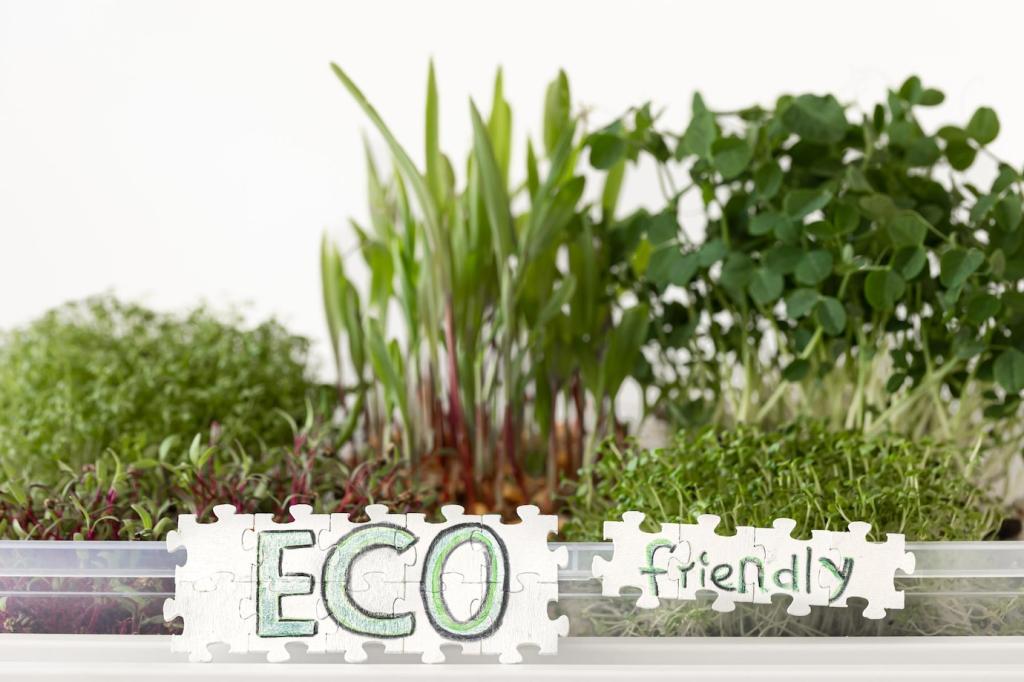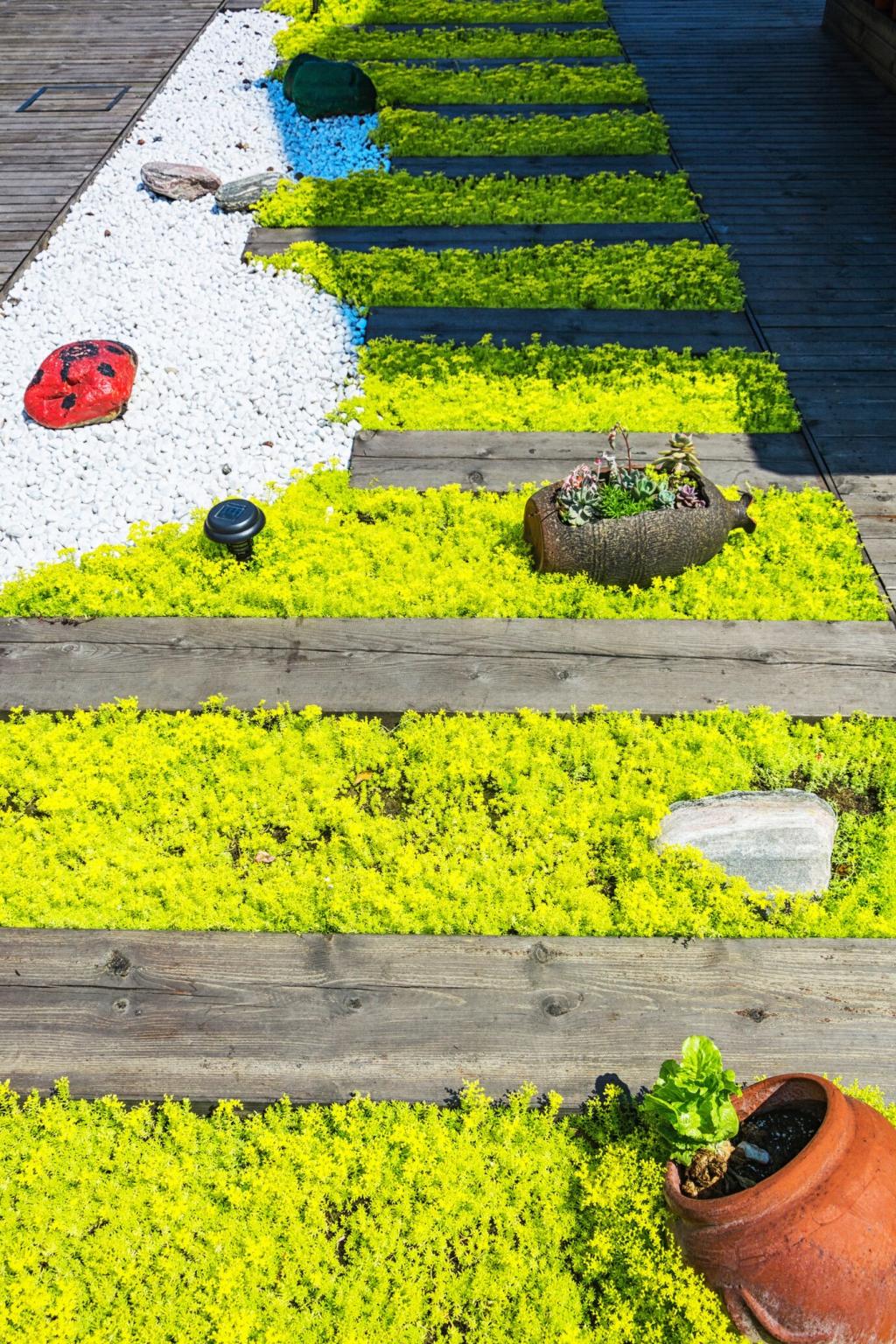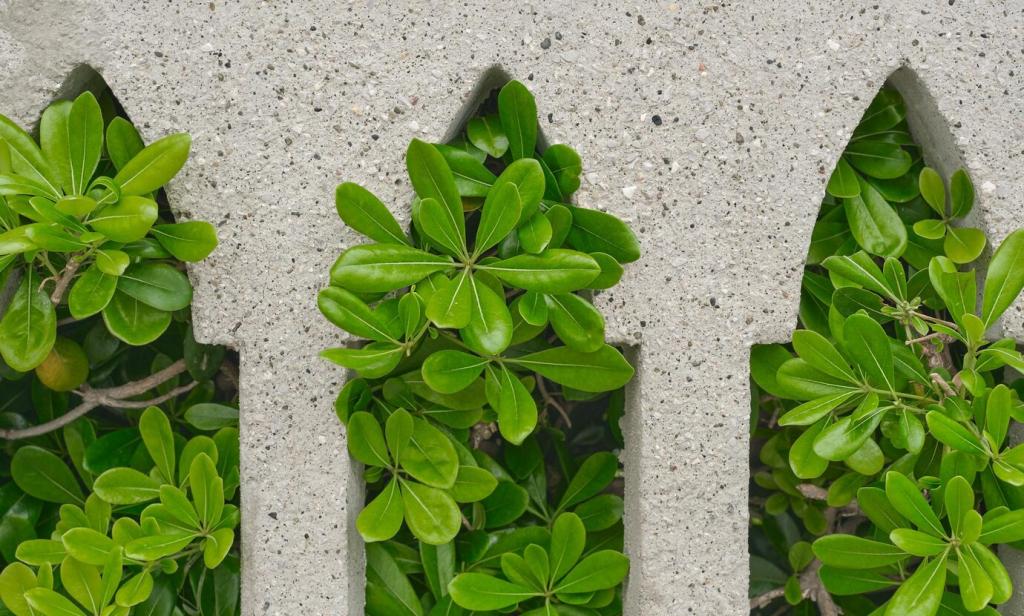Green Roofs and Living Walls: Capturing Rain Up High
Extensive green roofs are shallow, low-maintenance, and perfect for broad coverage; intensive roofs support shrubs, trees, and social spaces. Both absorb and slow rain while tempering rooftop temperatures during heat waves.
Green Roofs and Living Walls: Capturing Rain Up High
Root barriers, drainage mats, and robust waterproofing are non-negotiable. Overflow scuppers and inspection ports make performance visible and maintenance straightforward. Work with engineers early, then enjoy a quieter, cooler building envelope.









